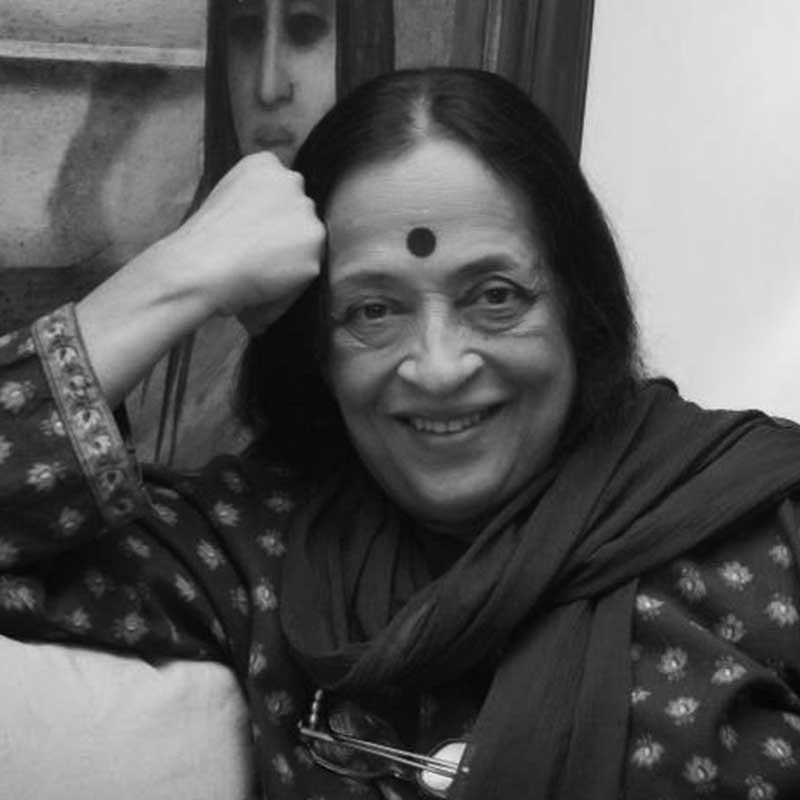
Anjolie Ela Menon was born in Burnpur, West Bengal in 1940. She studied Literature at Delhi University before studying at the J.J. School of Art. She received a scholarship to study at the École des Beaux-Arts, Paris from 1959 to 1961.
Menon is largely inspired by European art, which is reflected in her works. She often replicates the application technique of the translucent glaze found in mediaeval Christian art. First, Menon prepares the masonite surface by applying thin layers of paint, after which she scrapes it and paints translucent colours on top, resulting in a smooth and polished surface. These deep, slightly textured jewel tones help create the haunting quality of her gloomy, still, longitudinal, dark-eyed figures. Throughout her career, Menon has constantly re-envisioned her role as an artist, adapting her use of different media and styles, and resisting categorisation.
However, certain subjects and themes have remained relatively consistent, such as the image of the nude female, and the iconography of distance and loss shown through her images of crows, empty chairs, and semi-hidden figures.
Menon has exhibited her works both in India and internationally, including ‘Kalpana: Figurative Art in India’ presented by the Indian Council for Cultural Relations at Aicon Gallery (London, 2009); ‘Mapping Memories – 2, Painted Travelogues of Bali and Burma’ at Gallery Threshold (New Delhi, 2008); and ‘Kitsch Kitsch Hota Hai’ at India Habitat Centre (New Delhi, 2001). In 2000, she received the Padma Shri from the Government of India. Menon lives and works in New Delhi.